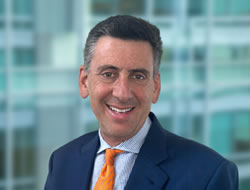expert witnesses
*Enter State Names or Abbreviations. Use space to separate multiple states e.g. CA Washington NY
Product Liability / Defects Expert Witnesses: 40
Warning Label Safety Research Expert Gerald Goldhaber
Dr. Gerald M. Goldhaber
1525 Amherst Manor Dr., Suite 907
Williamsville NY
14221
USA
phone: 716-689-3311
fax: 716-689-3342

Dr. Gerald M. Goldhaber is President & CEO of Goldhaber Research Associates, LLC. Over the past 46 years, he has emerged as one of the nation's leading safety warning communication experts. Dr. Goldhaber has been retained in over 200 lawsuits dealing with the issue of warnings and has written numerous research articles on the subject of effective warning labels. His clients include over 100 of the top 500 corporations in the U.S. and 50 of the top 100 law firms and government agencies including the FDA, USDA, CPSC and the DOD. He has designed, developed and defended warning labels for International Playtex, Owens Corning Fiberglas, Dr. Pepper Seven Up, Rheem, Otis Elevator, Daikin USA, S. C. Johnson, and the Swimming Pool & ATV Industries.
Dr. Goldhaber has written and edited 11 books on the topic of communication. His 12th book, MURDER INC.: How Unregulated Industry Kills or Injures Thousands of Americans Every Year...and What You Can Do About It is now in print, was an Amazon Best Seller and named by Kirkus Reviews as one of the top one hundred non-fiction books of 2020. For the past 14 years, he has published the Goldhaber Warnings Report, which reaches over 10,000 litigators nationwide. He has served as an analyst for numerous radio and television shows, most recently CNN Tonight. He has been selected as a member of Who's Who in America and Who's Who in the World.
Areas of Expertise:
Product Liability and Personal Injury
Warning Label Research
Warnings and Safety Communications
Fitness Equipment Expert Witness Harvey Voris
Harvey C. Voris
Principal Owner
8381 Deepcliff Drive
Huntington Beach CA
92646
USA
phone: 714-350-6160

Harvey C. Voris’ entire engineering career has been devoted to the Fitness Industry. He has over 35 years of Fitness Equipment Design experience and has been issued 7 U.S. utility patents. Mr. Voris has a Bachelors of Science in Engineering from UCLA with a specialization in Bio Structural Mechanics.
Mr. Voris' Masters in Engineering is from Cal State Long Beach where he specialized in Fatigue and Failure Analysis. He has spent 21 years devoted to the development and promotion of safety standards for the fitness industry. Mr. Voris has authored numerous standards and has chaired the ASTM committee devoted to fitness standards development since 1995.
Litigation Support - Mr. Voris provides engineering analysis and accident reconstruction related to consumer and fitness products and facilities. His services are available to attorneys representing both plaintiff and defense. With 35 years of experience, a biomechanics background, and extensive experience in design and product testing, Mr. Voris speaks with authority on the following critical issues:
Product Liability - Patent Development - Patent Infringement - Facility Risk Management - Standards Compliance
Chemical Expert Witness Meyer R Rosen
Meyer R. Rosen, President
CPC, CCHE, FRSC, DABFET, FAIC
Fire & Explosion Investigator (Advanced Training)
Certified Professional Chemist & Chemical Engineer
16547 Crescent Beach Way
Bonita Springs FL
34135
USA
phone: Cell: (516) 459-2050 / (239) 221-8161

 Meyer R. Rosen, FRSC, FAIC, CPC, CChE, is a leading creative consultant for the Legal Profession and specialty Chemical / Personal Care Industries. He is the Founder & President of Interactive Consulting, Inc. (www.chemicalconsult.com).
Meyer R. Rosen, FRSC, FAIC, CPC, CChE, is a leading creative consultant for the Legal Profession and specialty Chemical / Personal Care Industries. He is the Founder & President of Interactive Consulting, Inc. (www.chemicalconsult.com).
Meyer is a Forensic Litigation expert for both plaintiff and defense in hazardous chemicals, products liability, personal injury, spa injuries, bleaching, hair coloring, fires and explosions, intellectual property and trade secret cases. He also provides Technical Marketing, New Business Development, Technical Consulting and Professional Editing services internationally to the Specialty Chemical, Personal Care, Cosmetic, Pharmaceutical, Medical Device, and Allied Industries.
Meyer also has 15 years of experience as a Professor of Fire Technology at Westchester Community College. Mr. Rosen is Editor- in- Chief of Harry’s Cosmeticology, 9th Ed. A 2,600-page trilogy on all aspects of the cosmetic industry (www.harryscosmeticology.com)’ as well as being Emeritus-Editor-in-Chief for EuroCosmetics magazine (Germany) and Editor-in-Chief of the Delivery System Handbook.
Technology Expertise (Intellectual Property/Chemical Industry): Mr. Rosen provides consultation and litigation support in patent infringement, trade secret issues, and licensing matters. His scientific areas of expertise include, but are not limited to:
- Organosilicones: Surfactants, Emulsions, Foams, Antifoams, Silane Coupling Agents
- Water Soluble Polymers, Poly(ethylene oxide), Polyethylene Glycol, and Poly (acrylamide) and Water Insoluble Polymers
- Colloid and Surface Chemistry: Stability of Dispersions, Wetting & Spreading Phenomena, Suspensions & Emulsions, Clays, Paint & Coatings, Personal Care, Cosmetics
- Flocculating and Coagulating Agents
- Applied Rheology, Rheology Modification of Aqueous & Non-Aqueous Media
Certifications:
- Chartered Chemist and Fellow: Royal Society of Chemistry – London
- Nationally Certified Professional Chemist and Professional Chemical Engineer
- Fire and Explosion Expert (Advanced Training)
- Fellow: American College of Forensic Examiners
- Fellow: American Institute of Chemists
- Diplomate: American Board of Forensic Examiners
- Diplomate: American Board of Forensic Engineering and Technology
Legal Malpractice Expert Witness Mitch Jackson
Mitch Jackson
28202 Cabot Road Drive
Third Floor
Laguna Niguel CA
92677
USA
phone: 9498558751
fax: 949-861-9554

 Mitch Jackson is a master communicator, lawyer and private mediator with over three decades of experience in the private sector. He's personally tried more than 70 trials and has a consistent track record of obtaining and negotiating numerous million-dollar verdicts and settlements, Mitch brings a massive amount of expertise to every case and matter he handles. He's served as a Judge Pro Tem with the Orange County Superior Court and fees mediator with the Orange County Bar Association.
Mitch Jackson is a master communicator, lawyer and private mediator with over three decades of experience in the private sector. He's personally tried more than 70 trials and has a consistent track record of obtaining and negotiating numerous million-dollar verdicts and settlements, Mitch brings a massive amount of expertise to every case and matter he handles. He's served as a Judge Pro Tem with the Orange County Superior Court and fees mediator with the Orange County Bar Association.
Mitch’s accolades speak volumes: he’s an “AV” rated lawyer, the highest independent peer honor for ability and ethics by Martindale-Hubbell. He’s also been named California Litigation Lawyer of the Year in 2013 and Orange County Trial Lawyer of the Year in 2009.
When he's not in the courtroom or successfully mediating a resolution to a dispute, Mitch is on the move—traveling, speaking at conferences, and sharing insights through his blog and books. He’s written and co-written several notable works, including:
"AI in Law- Revolutionizing Your Legal Practice with Innovative Strategies and Tools" (click to read)
"Mastering The Art of Negotiation- Insider Secrets for Business Owners, Entrepreneurs, and Professionals"
"The Mediator's Handbook: Turning Conflict into Collaboration"
"From Courtroom to Boardroom: A Trial Lawyer's Guide to Winning Negotiations!"
"How to Create AI, Web3, and Metaverse Branding and Licensing Opportunities"
"The Web3, Metaverse, and AI Handbook"
"From AI to Blockchain: 14 Technology Trends Every Lawyer Must Know!"
"The Ultimate Guide to Social Media for Business Owners, Professionals, and Entrepreneurs"
Mitch’s influence extends beyond the legal field. He’s twice graced the stage at the Tony Robbins Business Mastery Event, captivating audiences of thousands. As a consulting expert in Sue Scheff’s "Shame Nation" and a contributing author to California’s Continuing Education of the Bar (CEB) in "Effective Introduction of Evidence in California - Chapter 54 Electronic and Social Media Evidence," Mitch is a sought-after thought leader.
Stay connected with Mitch on Linkedin and explore more of his work at his blog mitchjackson.com
Engineering Expert James Miller
James M. Miller, PE, PhD
Founder
2392 Fuller Court
Ann Arbor MI
48105
USA
phone: 734-662-6822
fax: 734-747-9712

The four PhD and registered PEs at Miller Engineering are celebrating 40 years of Professorships at three universities along with providing services to Government, Insurance, and Industry—through research, publications, presentations, and expert testimony. We have a dedicated office with a full time staff of engineers, researchers, and technical writers. The span of our collective academic and experiential expertise covers well the Mechanical, Electrical, Chemical, Agricultural, Industrial, Human Factors, Ergonomic and Safety fields of engineering. The areas listed below are from actual projects completed in our 40 years of history.
Vehicles
Mechanical & Electrical Safety
| Warnings & Instructions
Consumers/Household Safety
|
Chemicals Safety & Labeling
Chemical Exposures & Workplace Safety
Fires & Explosions
| Agriculture
Construction
Insurance Subrogation & Forensics
|
| James M. Miller, PE, PhD – Founder Dr. Miller is an Emeritus Engineering Professor at the University of Michigan. He has directly served in Washington originating several Federal OSHA safety regulations, and interacts regularly with CPSC regarding safety and product recalls. Dr. Miller often works on projects relating to compliance with occupational safety standards, provides upper management guidance on product design, recall and liability issues, and serves as an expert witness. |
| Mark R. Lehto, PhD – Co-Founder Dr. Lehto is a Professor of Engineering at Purdue University. He completed his Ph.D. in engineering at the University of Michigan, where he specialized in Human Factors Engineering, in particular Warnings and Labeling. Dr. Lehto specializes in knowledge engineering, warnings and instructions, structuring expert systems, accident modeling, accident statistical analysis, consumer product safety, boating safety, in-field national surveys of product usage, and product information effectiveness. |
Adam M. Olshove, PE, MSE – Engineering Manager Mr. Olshove has over 10 years of experience providing consulting services to industry and the legal profession. He holds an MS in Mechanical Engineering with a focus on control systems and battery modeling (2019), and a BS in Mechanical Engineering (2012), both from the University of Michigan. He has performed dozens of on-site investigations nationwide in relation to consumer product design and industrial accidents, including failure analysis and testing. |
| James M.L. Miller, MS, PhD, EIT – Engineering Associate Dr. Miller is an Assistant Professor of mechanical engineering at Trine University in Angola, Indiana. Dr. Miller graduated with a Ph.D. degree in mechanical engineering and electrical engineering from Stanford University in 2021, advised by Dr. Thomas W. Kenny. At JMME he has applied his expertise to biomedical heat transfer problems and energy management in hydroelectric systems, solar arrays and portable battery usage. |
| Jeffrey D. Rupp, MSE – Engineering Associate Mr. Rupp has a BS in mechanical engineering from the University of Michigan and a MS in systems engineering and engineering management from Wayne State University. Among his company affiliates is 26 years with Ford Motor Company and Volvo Car Corporation, where he was involved in crash development and crash sensing calibrations. |
Epidemiology Expert Lawrence Mayer
Lawrence S. Mayer
MD, PhD
22772 Azure Sea
Laguna Beach CA
92677
USA
phone: 949-291-7027

Dr. Mayer is an independent consultant and scholar that (for identification only) holds the position of Visiting Fellow in Human Flourishing, Harvard University. He has been a full-time tenured professor with recent appoints in statistics, biostatistics, epidemiology, biomedical informatics, public health and medicine (psychiatry). He held various titles including, Professor (Part-time), Bloomberg School of Public Health and School of Medicine, Johns Hopkins University, Affiliated Professor, Mayo Clinic/ASU joint program in Biomedical Informatics, a member of the Research Staff at Mayo Clinic, and Professor at Arizona State University.
Dr. Mayer continues to do research and mentor young physicians and medical students while doing a limited amount of consulting in epidemiology, biostatistics, statistics, observation studies and clinical trials. His consulting projects often focus on model development, execution and inferences. He is one of the few MD/PhD epidemiologists. He led a group of 6000 physicians and epidemiologists that reviewed the science of COVID-19
Furniture Industry Expert Witness Leonard Backer
Leonard J. Backer
President
16463 N.E. 33rd Avenue
North Miami Beach FL
33160
USA
phone: 305-409-9092

Leonard J. Backer has over 28 years of extensive and successful Seating, Tables and Furniture Industry experience in all key areas. Mr. Backer has been directly involved in the design and development of 250+ seating and table collections. He specializes in Private Label Manufacturing, Sourcing, and Product Development expertise. Mr. Backer provides aggressive Expert Witness and Litigation Support services to attorneys, insurers and businesses for Plaintiff or Defense. He performs site inspections, detailed product reviews and incident analyses. He has worked with law firms and insurance companies to develop and coordinate strategies for various types of legal actions and lawsuits. Very strong hospitality background. Mr. Backer has extensive experience with hotel, restaurant, cruise ship, retail store and senior living incidents. Personal Injury and Product Liability Cases. He provides detailed analyses, written opinions, and expert witness reports for clients throughout the U.S. Strong proven deposition and court testimony. Areas of Expertise:
|
|
Mechanical Engineering Product Liability Expert Witness John Ryan
John L. Ryan, BSME, PE
Business Headquarters:
PO Box 7
Poncha Springs, CO 8142
Offices in: CO, AR
81242
USA
phone: 855-627-6273

John L. Ryan, BSME, P.E. is a Mechanical Engineer who provides general Mechanical and Structural Engineering expertise. Mechanical and Safety Engineering (MASE) provides full service analysis and accident reconstruction of products involved in accidents.
Mr. Ryan's services have been requested for attorneys and insurance companies needing forensic engineering expert witness testimony to determine whether machinery and products involved in injury cases were adequately designed or whether they have a Design, Manufacturing, or Material Defect. All products are lab-tested on site to determine adherence to industry standards and engineering design protocol. Alternate preventative designs are developed when none exist commercially.
Mr. Ryan is available for both Plaintiff and Defense, depending on the individual case. His services include producing high quality reports and visual aids in the courtroom such as scale models to help explain accident scenarios and alternate designs to judges and juries.
Areas of Expertise:
- Accident Investigation and Reconstruction
- Machine Guarding Accident Investigation
- Climbing Gym Accidents
- Belay Device Failure
- Rock Climbing Accidents
- Fall Protection Failures
- Ladder Failure Investigation
- Tree Stand Failures
- Industrial Accidents
- Power Press Accidents
- Connection Failures
- Bolt Failures
- Weld Failures
- Testing Products to Industry Standards to Determine Compliance
- Design Defect Analysis
- Structural Analysis of Buildings
- Product Liability Investigations
- General Engineering Injuries and Issues
- Industrial safety
- Engineering Continuing Education
- Product Certification
Product Liability Expert Witness Eric Rose
Eric Rose, NPDP, MBA
18375 Ventura Blvd, #742
Tarzana CA
91356
USA
phone: 818-383-8330

- BACKGROUND:
40+ years' experience including in product design, product development, and manufacturing in consumer, medical, and industrial product markets. Product innovation part-time academic since 2009, public speaker since 1985. Certified New Product Development Professional (NPDP) since 2008 by the Product Development and Management Association. Member of: Society of Plastics Engineers, Society of Manufacturing Engineers, American Society for Quality. Expert witness services to Product Liability, Intellectual Property, and Commercial Dispute litigators.
- PRODUCT LIABILTY EXPERTISE:
Retained by both plaintiff and defense counsel. Specialize in personal injury cases involving product defects, manufacturing defects, product safety, engineering design, mechanical failures, material failures, product quality assurance, and foreseeable misuse.
- CASE EXAMPLES:
- Retained in cases involving 3M, Honeywell, Clorox, Ace Hardware, and others.
- 3M Combat Arms earplug case, retained by two plaintiff firms. More at, https://bit.ly/Forbes-on-3M Daubert ruling at, https://bit.ly/EPR-3MEP-Daubert (Page 98). Two depositions. (Plaintiff)
- Furniture review of the state of competitive product safety, mechanisms, warnings. Counsel represented major insurance company. Settled after report. (Defense)
- N95 mask commercial dispute, settled after report. (Plaintiff)
- Consumer electronics patent infringement, settled after report. (Defense)
- MORE INFO AT:
Expert witness services offered can be seen at, https://bit.ly/PDEWS Preferred contact: eric@pinnaclepi.com
Content above is a selection of work, current case history available upon request. Expert witness testimonials at, https://bit.ly/EPR-EWT
- EXPERT WITNESS PODCAST INTERVIEW
Forensic Safety Engineering Expert Witness Kevin Smith
R. Kevin Smith, P.E., D.F.E.
President, R. K. Smith Engineering
1539 Chalone Ct.
Crown Point IN
46307
USA
phone: 219-226-9510 (Office)708-790-1938 (Cell)

R. Kevin Smith PE, BSME, MMAE, has been a specialist in Engineering Forensic Safety and Design for 35 years. He has consulted on over a 1,000 matters nationwide. Mr. Smith is a registered professional engineer and holds a BSME and MMAE from the Illinois Institute of Technology in Chicago. He is board certified forensic engineer through the National Academy of Forensic Engineers. He specializes in Material Handling Equipment Safety, including lift trucks, dock safety, truck loading, conveyors, and aerial work platform safety.
Mr. has been actively involved as a member of the committee that writes the Safety Standard for Low Lift and High Lift Trucks (ASME/ANSI B56.1) for over 30 years. He also serves on the B56.6 committee (rough terrain lift trucks) and the ANSI A92.5 and A92.6 subcommittees (self-propelled elevating work platforms).
Litigation Support - Mr. Smith formerly worked for Triodyne, Inc. for over 15 years as a forensic engineer/principal engineer. As President of R. K. Smith Engineering Inc., for over 25 years, he currently has a laboratory for examination and testing,and owns or has access to varied testing equipment and tools.He has testified at depositions and trials on several hundred matters. Mr. Smith has performed hundreds of investigations into product failures involving injury and property damage, and has reconstructed numerous accidents. His expertise is available to counsel representing both Plaintiff and Defendant. Mr. Smith also was previously on the Adjunct Math faculty at Prairie State College for 13 years.
Areas of Expertise:
|
|
Failure Analysis Expert Thomas Read
Thomas Read, PhD
Principal
1435 Fulton Rd.
Santa Rosa CA
95403
USA
phone: 707-544-2374
fax: 707-544-2370

In parallel, Dr. Read has spent over twenty five years as a consultant to attorneys and engineers. He has given more than 100 depositions and has appeared in court numerous times.
Company Profile: Read Consulting, LLC is a full service laboratory providing services in the following areas:
Forensic Engineer Expert Dr Rasty
Prof. J. Rasty, Ph.D., PE, MBA, CFEI, CFII
Founding President & CEO
2309 19th Street
Lubbock TX
79401
USA
phone: (806) 368-9811
fax: (806) 368-9812

Since 1988, Real-World Forensic Engineering, LLC ("RWFE") has provided engineering services to industries and government labs, as well as litigation support to both plaintiff and defense attorneys practicing in many areas.
RWFE Areas of Expertise Include:
|
|
At RWFE, we proudly distinguish ourselves by our Four C's:
CREDENTIALS. COMPETENCE. CREDIBILITY. COMMUNICATION.
| Credentials: | B.S., M.S., M.Eng., M.B.A., J.D., and Ph.D. Degrees Licensed Professional Engineers in Mechanical, Electrical, and Civil Engineering Tenured University Professors and Professionals NAFI Certified Fire and Explosion Investigators (CFEI) Licensed Master Electricians |
| Competence: | Over 80 Combined Years of Experience in Engineering R&D, Industry, Academia, Consulting, and Expert Witness Litigation Support Over 120 Combined Deposition and Court Testimonies |
| Credibility: | Internationally Recognized in Our Areas of Expertise More Than $19 Million in Peer-reviewed and Funded Research Grants Over 200 Combined Scientific Publications and Journal Articles |
| Communication: | Over 20 Different Undergraduate and Graduate-level University Courses Over 30 Invited Short Courses, Talks, and Lectures |
Design Evaluation – Accident Investigation – Intellectual Property - Failure Analysis – Fire Cause & Origin – Component Testing - Computer Aided Drafting – Accident Animation - Expert Witness & Litigation Support
Consultants. Experts. Innovators.™
Operating from more than 110+ offices around the globe, we provide services to corporations, insurance companies, law firms, and government agencies.
Rimkus Life Sciences experts have a wealth of specialized expertise to help clients comprehend and improve how humans interact with their facilities, products, and systems.
Our experts offer significant professional experience related to studying and understanding human behavior and experience. Our experts have extensive knowledge involving but not limited to human health and medical devices, warnings and signage, perception and reaction, medicine and patient care, and health and sports activity.
The scientists, engineers, and researchers in Rimkus Life Sciences specialize in human based research to support product design and development, product validation, and development of instructions and warnings for use. Our experts work with clients across the globe in every major product sector. They understand how to leverage rigorous research and thoughtful analysis with creative problem solving to support the development of products.
Rimkus Global Services Overview
LIFE SCIENCE EXPERTISE
| • Product Safety • Warnings and Safety Information • Transportation Human Factors • Occupational Safety • Chemical Hazard Communication • Railroad Grade Crossing and Trespassing Accidents |
|
|
|
|
|
|
|
|
|
View our full suite of Life Sciences Expert Services.
GLOBAL OFFICES
Rimkus operates from 110+ offices worldwide, with headquarters in the following cities.
| Australia Grosvenor Place, Level 31 225 George Street Sydney NSW 2000 Phone: +61 2 9290 1495 Email: APEnquiries@rimkus.com | Malaysia Menara Citibank Suite 20.04 Level 20, 165 Jalan Ampang 50450 Kuala Lumpur Phone: +60 3 9212 1204 Email: APEnquiries@rimkus.com |
| New Zealand Level 2, 1 Broadway Newmarket Auckland 1023 Phone: +64 9 5201929 Email: APEnquiries@rimkus.com | Singapore 138 Market Street Level 5, CapitaGreen 048946 Phone: +65 6016 6057 Email: APEnquiries@rimkus.com |
| United Kingdom 5th Floor 40 Lime Street London EC3M 7AW Phone: +44 12 5767 6107 Email: EurEnquiries@rimkus.com | United States 12140 Wickchester Ln Ste 300 Houston Texas Phone: +1 800 580 3228 Email: Expert@rimkus.com |
View a full list of Rimkus Office Locations.
View Rimkus Quantum and Delay Expert Services Profile.
View Rimkus Forensic Expert Services Profile.
Medical Device Expert Witness Christopher Daft
Christopher M. Daft
Dr.
2443 Fillmore St., #380-4039
San Francisco CA
94115-1814
USA
phone: 833-860-3966

Christopher M. Daft, PhD, is an award winning, Oxford Educated scientist whose areas of expertise include medical imaging, artificial intelligence, semiconductors, medical devices, sensors, MEMS, signal processing, and image processing. He holds 23 United States Patents with 20 applications pending, Dr. Daft has diverse industry experience including multi-nationals such as GE, Medtronic, Fujifilm, Samsung, and Siemens as well as several start-ups.
He has testified at trial 5 times and been deposed 15 times.
Dr. Daft has been an Institute of Electrical and Electronic Engineers (IEEE) Senior Member since 2004. He has three years of experience teaching electrical and computer engineering at the University of Illinois.
Dr. Daft holds a BA and MA in Physics from Oxford University as well as Doctorate from Oxford in Materials Science.
Litigation Support - Dr. Daft provides litigation support in the areas of Intellectual Property and Medical Devices including Imaging, particularly Medical, Patents, and more. His experience includes a variety of cases in the areas of wearable electronics, imaging systems, and surgical technology. Dr. Daft has extensive deposition and trial testimony experience.
Areas of Expertise:
|
|
Economic Damages Expert Witness Sidney Blum
Sidney P. Blum, CPA, CFE, CPEA, CFF
An Economic Damages, IP, general, royalties
Los Angeles and San Francisco
Los Angeles and San Francisco CA USA
phone: 818-631-3192 or 510-570-646

CPA, CFE, CPEA, CFF with 35 years of experience as a financial damages, accounting, royalties, licensing, valuation expert. Calculations in general damages, intellectual property (copyright infringement, trademark infringement, patent infringement, DMCA, trade secrets), breach of contract, reasonable royalties, wrongful termination, personal injury, consumer product liability & royalty audits. 2017 California CPA of the Year & 2012 Certified Fraud Examiner of the Year.
Expert in unjust enrichment & lost profits. Sample Industries: pharmaceuticals, medical devices, music, film, construction, machinery, security, toys, software, hardware, media, entertainment, energy, security, personal injury, partnerships, apparel & consumer products. Real world experience as Chief Audit Officer of Beats, KPMG Partner, and at Occidental Petroleum, Unocal, and Disney. While at Ernst & Young and KPMG, led national fraud and royalty auditing. Vice Chair ('16-'17) Board of Regents of the 80,000+ member Association of Certified Fraud Examiners. More than 3,000 forensic accounting contract investigations.
Mr. Blum has extensive experience working on economic damages in both simple and multi-billion dollar complex litigations. With over 150 matters as an expert witness, his damage calculations have consistently been accepted in court, even in cases involving settlements up to $1 billion. His reports have been recognized as best examples by judges for their thoroughness and clarity. Mr. Blum has represented a broad range of clients, including leading law firms and major corporations across various industries.
Clients: Microsoft, Dolby, Sony, Paramount Pictures, Mattel, Warner Bros., McDonald’s, Shark Tank, WWE, Steven Spielberg, Tom Hanks, Amgen, GM, Sears, IGT, IMG, Tessera, Philips, Diageo, Harley-Davidson, DKNY, Chrysler, Ross, UMB Bank, Bank of America, Everlast, Fate Thera., Medtronic.
Areas of Expertise:
|
|
Featured resources
by Dr. Gerald Goldhaber
by James M. Miller, Mark R. Lehto
by Christoph Mlinarchik
Follow us










